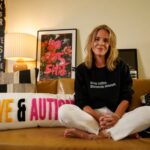December 30, 2025
Why Play is Essential to ABA Therapy for Autistic Children
FEATURED POSTS
December 15, 2025
November 25, 2025
Play is an essential part of working with children with autism in ABA.
As a behavior technician (BT), play helps build trust and comfort between you and your client. That process starts with play, having fun, and being a kid. Getting your clients in a state of play builds this foundation for trust, which we refer to as “rapport.” When starting to work with a new client, your supervisor and/or client’s caregiver will provide you with some of your client’s special interests and activities. You can incorporate these into your sessions to make learning fun and personalized. Using rapport in combination with their preferred activities leads to successful pairing with your client.
In a Learning Center setting, for example, your supervisor may suggest activities such as playing with toys or board games or interacting with peers. Your client may quickly find interest in a Learning Center toy, game, or other activity without prompting. But, if your client doesn’t give you a direct response, give them choices based on what you know about them. For example, say “We can play with train tracks or do a puzzle. What would you like to do?” Give them different choices until they choose something.
As soon as they give you an answer or show signs of interest in something, reinforce the toy or activity by showing interest in it yourself, e.g., clapping or showing praise. In my experience, this part of the pairing process varies. Sometimes it may take a while for a client to warm up in a social environment. Other times, it happens quickly. It just depends on the individual. As a BT, this process teaches you to be patient. When you find out what interests your clients, it makes pairing with them in sessions more fun.
Natural Environment Teaching (NET) While Pairing
Playing and pairing as a BT is essential because it creates opportunities for natural environment teaching (NET). Playing with your clients encourages an environment in which they’re motivated to participate.
In my first week working with a client, we played Memory*, a matching game. This was the first time we actively played together, and I saw him deeply engaged in an activity. I learned that he has a great memory, making the game more engaging for both of us. He became more receptive to responding once his attention was directed toward the game. Playing the game created opportunities to reinforce his behavior like waiting his turn, following the rules, and using his words when he had questions. This was essential to pairing early on in our tech-to-client relationship.
Playing Memory aided me in building rapport with my client. It built trust and comfort that’s pertinent to his learning environment. I could tell he was having a good time and vice versa. This environment motivated my client to learn. He enjoyed engaging in the fun activity with me and a group of peers. Participating in group games encourages patience, following instructions, and communication between clients.
Let Play Be Your Guide
Gaining your client’s trust before you place any demands is key. They are less likely to listen to you if they don’t know who you are. That’s why it’s important to take the time to play and pair with your client and show them that you’re safe and fun to be around.
Learning to play with your clients teaches you their interests. It shows you their likes and dislikes. It also points you to different games or activities in the Learning Center or teaching environment that may trigger them. Knowing their interests allows you to identify their reinforcers and see behavior patterns that their board certified behavior analyst (BCBA) can implement into future programming.
Time Flies When You’re Having Fun
Playing can be a lot of fun for BTs. There are several Learning Center games and activities that I enjoy implementing during sessions. I do my best to engage clients in activities that we mutually like. Once we find something we both enjoy, it doesn’t feel like work.
It’s rewarding to see clients make progress on their goals. Seeing them motivated to work for their preferred activities is also reassuring. This sense of accomplishment reinforces your work as a BT and motivates a continued state of play of learning and developing communication skills.
Incorporating play into your sessions fosters meaningful connections and creates a fun and engaging environment. It builds the foundation of trust between the client and their BT. We get to play an important role in each client’s learning and development. We can help nurture each child’s unique potential through dedication – one game at a time.
Additional Resources:
*Other games for pairing with a client can be found in the Play and Learning Addendum, 2.












